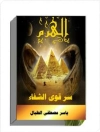Her name is undoubtedly less familiar than that of her grandmother, Eleanor of Aquitaine, or that of her famous conqueror son, Fernando III, yet during her lifetime, Berenguela of Castile (1180-1246) was one of the most powerful women in Europe. As queen-consort of Alfonso IX of León, she acquired the troubled boundary lands between the kingdoms of Castile and León and forged alliances with powerful nobles on both sides. Even after her marriage was dissolved, she continued to strengthen these connections as a member of her father’s court. On her brother’s death, she inherited the Castilian throne outright—and then, remarkably, elevated her son to kingship at the same time. Using her assiduously cultivated alliances, Berenguela ruled alongside Fernando and set into motion the strategy that in 1230 would result in his acquisition of the crown of León—and the permanent union of Castile and León.
In The Queen’s Hand, Janna Bianchini explores Berenguela’s extraordinary lifelong partnership with her son and examines the means through which she was able to build and exercise power. Bianchini contends that recognition of Berenguela as a powerful reigning queen by nobles, bishops, ambassadors, and popes shows the key participation of royal women in the western Iberian monarchy. Demonstrating how royal women could wield enormous authority both within and outside their kingdoms, Bianchini reclaims Berenguela’s place as one of the most important figures of the Iberian Middle Ages.
Innehållsförteckning
A Note on Names
Introduction
Chapter 1. Infanta and Heir, 1180-1197
Chapter 2. Queen of Leon, 1197-1204
Chapter 3. The Unwed Queen, 1204-1214
Chapter 4. A Failed Regency, 1214-1217
Chapter 5. Queen of Castile, 1217-1230
Chapter 6. The Leonese Succession, 1230
Chapter 7. Queen of Castile and Leon, 1230-1246
Conclusions
List of Abbreviations
Notes
Selected Bibliography
Index
Acknowledgments
Om författaren
Janna Bianchini teaches history at the University of Maryland.












